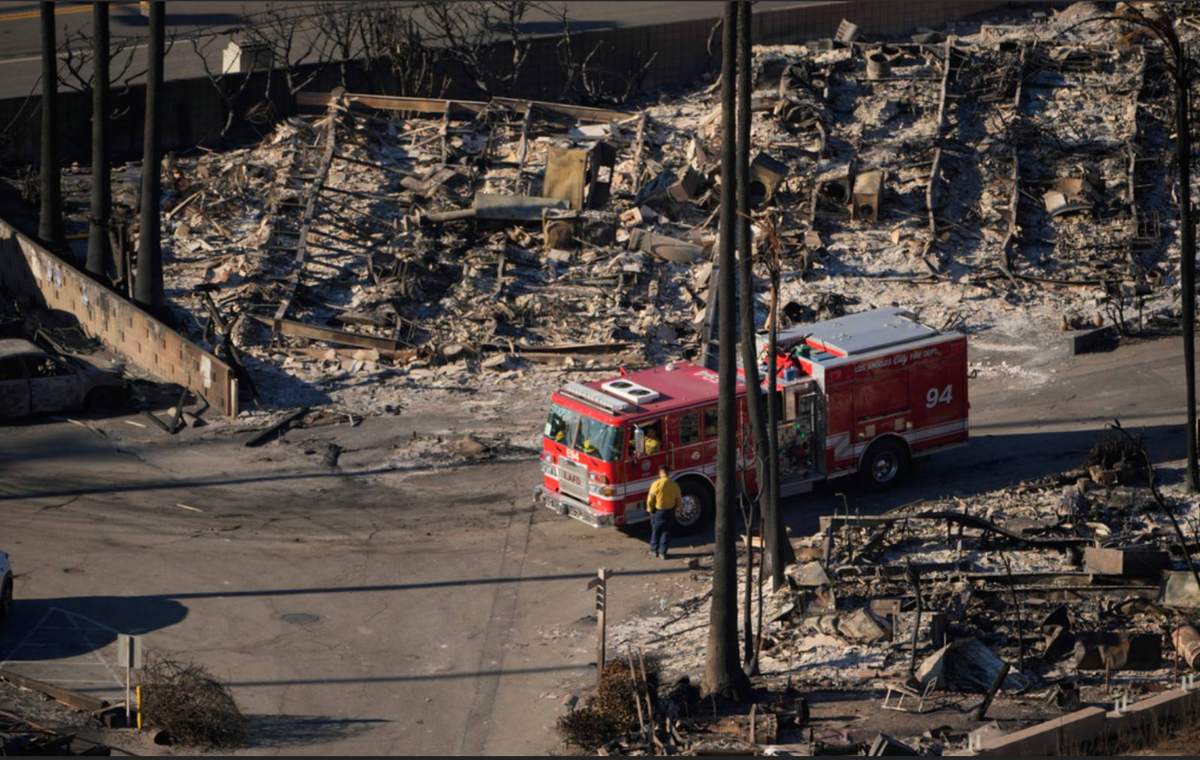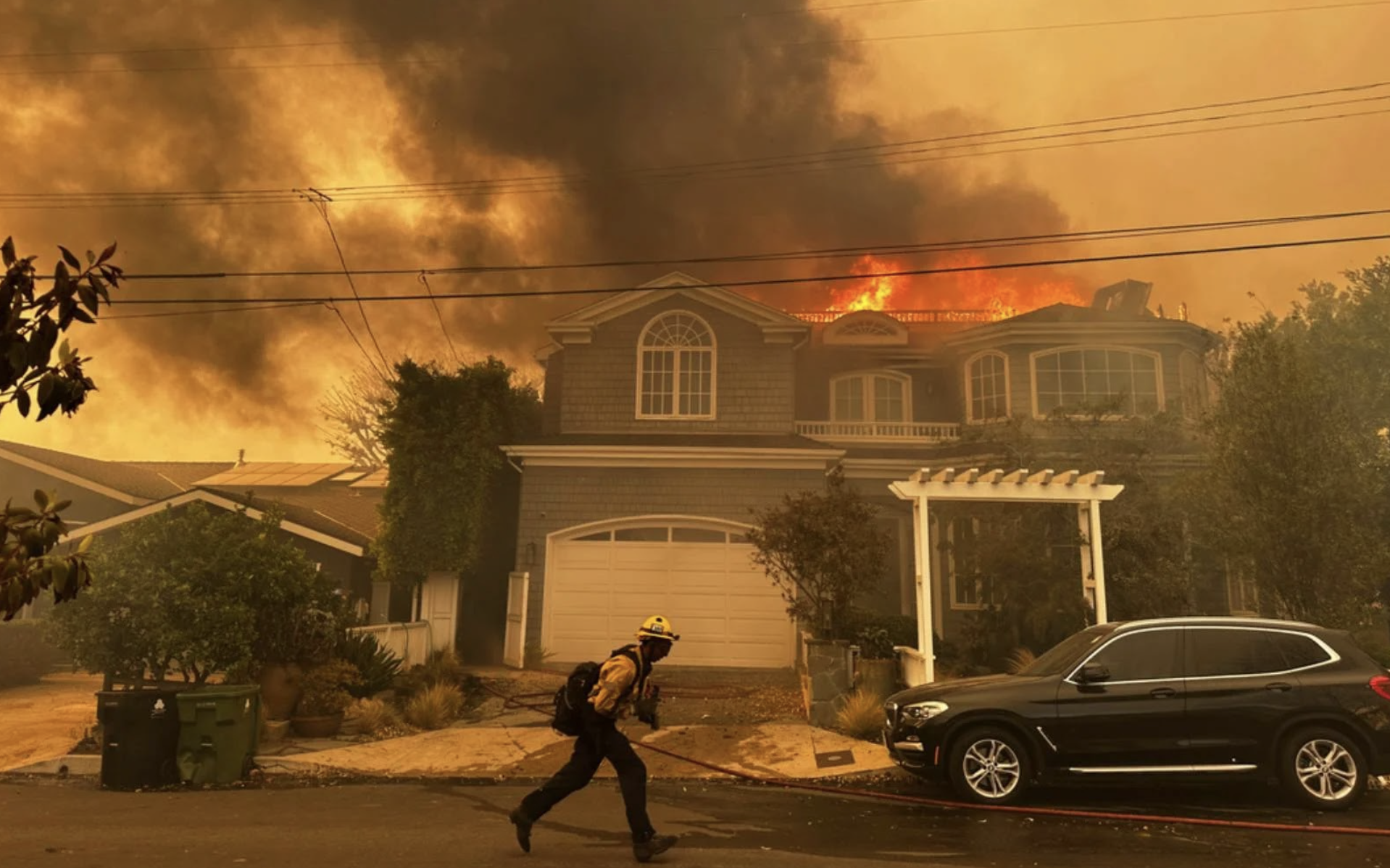LA to Amherst: Students Reflect on January Fires
Since Jan. 7, relentless fires have ravaged the Los Angeles community, forcing many to evacuate to safety. Assistant Features Editors Mira Wilde ’28 and Talia Ehrenberg ’28 highlighted the experiences of two students from LA and their transitions back to Amherst.

While the environmental destruction that has been plaguing our news feeds may feel worlds away to some, for many Amherst students from Los Angeles, this past month has brought about intense loss, anxiety, and health concerns.
California’s dry climate, extended droughts, and high winds make the state particularly susceptible to wildfires, with 8,024 wildfires in 2024 alone as reported by California’s Department of Forestry and Fire Protection. The series of fires that struck Los Angeles in January 2025 crossed the line between routine and catastrophe. Three weeks after the fires began, officials announced complete containment of the fires with The New York Times reporting that, between the Eaton and Palisades fires, over 16,000 structures have been destroyed, tens of thousands evacuated, at least 29 people killed, and 14 people are still missing.
“We get wildfires pretty often over the years. So when my parents and I saw it, we were like: ‘Oh, it’s just another regular fire’ … My dad and I actually didn't even [think] of evacuating at first because it’s just so normal,” said Yang Peng ’27, who is from the Pacific Palisades neighborhood, an area hit hard by the Palisades fire.
The feeling of “normalcy” meant many Los Angeles-area residents were caught off guard by the severity of these fires. According to NBC News, 200,000 of LA’s 3.8 million residents were under evacuation orders at one point during the fire.
“And this, I think, was kind of a paradigm shift for everyone: nobody is safe,” said Pauline Bissell ’25, from northeast LA.
Peng described the chaos of evacuating: “There were cars going out on the wrong side [of the road], because everyone was so desperate to get out … A lot of people abandoned their vehicle and left it on the road. The fire was already right next to us on the mountain next to the drive … It was just like a war zone; everything was already burned down.”
Peng and her parents evacuated to a hotel for a week before moving to an Airbnb. While staying at the hotel, they visited friends in the nearby Woodland Hills neighborhood. During this visit, the Kenneth fire encroached, and the family they were visiting also received an evacuation order.
So far from home and filled with so much uncertainty, all Peng could do was wait and watch. While accurate information had been hard to come by, Peng’s Ring camera had been a primary source of updates and communication, allowing her family to speak with firefighters and see in real time how close the fire was to taking her home.
“At one point, it was actually really, really close. It was right out of the backyard … I think my next door [neighbor’s house] burnt down,” Peng said.
While not everyone needed to evacuate, there was a sense within the LA community that everyone knew someone seriously affected by the fires.
“I still feel so lucky we didn’t have to evacuate, we didn’t lose our house. But I know a ton of people who lost everything,” Bissell said. “You’d see all these videos and you’re like, ‘Oh, and that was like, where my best friend went to school and it burned down.’ Eaton Canyon where my brother and I used to always go growing up … all of it burnt down.”
Beyond the destruction of places, people lost meaningful possessions.
“My mom, she’s an artist, and she has a lot of friends who are artists, and they lost all of their work, their life’s work totally gone. All the things they were working on … [if] they had a show coming up, all of that work is gone.” Bissell noted that this destruction has influenced her awareness of a different type of relationship that attaches people to material items, and the kind of loss that accompanies the destruction of said articles.
In spite of the devastation, Bissell further commented on how community members rallied together to support each other.
“Immediately after [areas were cleared], everyone was out volunteering or donating things … everyone put everything else on pause to help each other out, which was really nice,” Bissell said.
Leaving behind the community of shared trauma and collective understanding of the fires for snowy, below-freezing temperatures, the transition back to Amherst has been abrupt.
“It’s definitely a unique experience,” Peng said, reflecting on the stark transition of coming back to campus after not being able to go back to her house prior to the start of the semester.
Bissell similarly echoed this sentiment, “It’s such a strange shift to go from being there and even flying over the places that have burned. And now I’m here and I’m like: ‘Okay, now I just go to class.’”
When asked what the Amherst community could do for students directly affected by the fires, Peng shared: “If you have a friend who you know lived in LA, ask them how it’s going, or how they are feeling. I think that would help — just really understanding and being aware.”






Comments ()